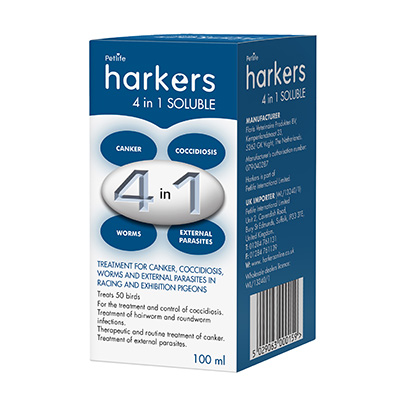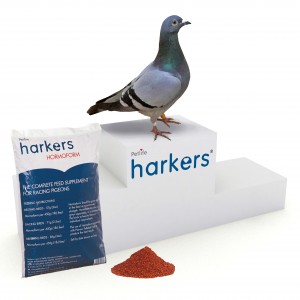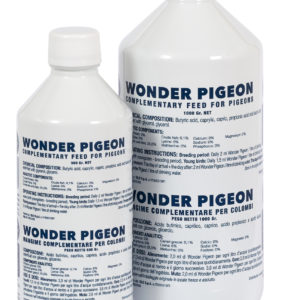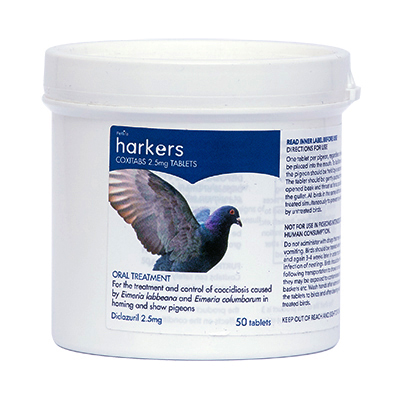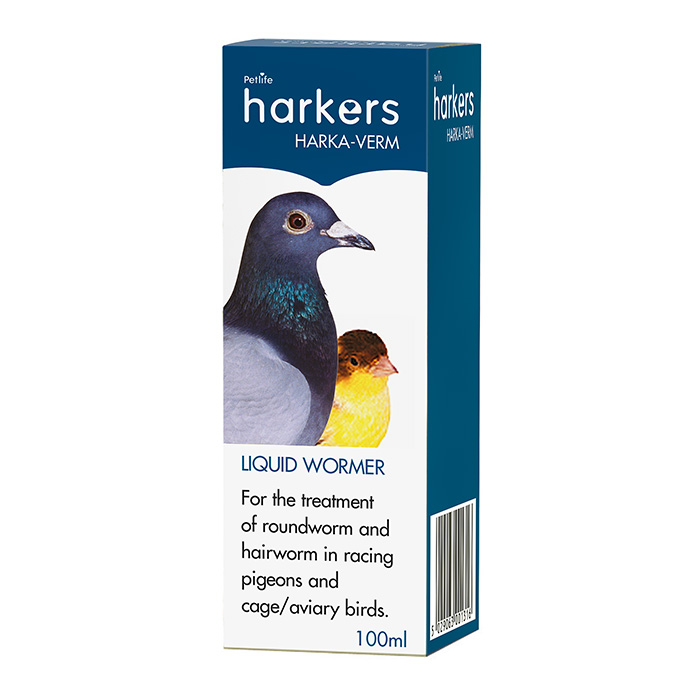Canker ~ (Trichomoniasis) is often confused with pigeon pox; the lesions of pigeon pox may resemble the pharyngeal form of canker. Canker is caused by a single-celled microscopic protozoal organism (similar to a coccidium) that can propel itself by movement of two pairs of flagella (hair-like extensions).
Trichomonas gallinae is widespread, with over 80% of pigeons being infected, the majority showing no clinical signs of canker but acting as carriers. Most canker cases occur in young pigeons or sick and stressed adult birds. Trichomonas gallinae is passed from adult to young in crop milk and clinical signs of canker often appear between the 2nd and 5th weeks of life.
There are three forms of canker recognised in pigeons:
a) Pharyngeal
This is characterised by pale yellow, cheesy, deposits on the mucous membrane of the back of the birds mouth and throat, extending down the gullet in some cases. The growths may be extensive and thus disrupt swallowing. This form of canker can easily be confused with pigeon pox. The two diseases are generally distinguishable, however, by the fact that canker deposits are crumbly and can be bloodlessly detached from the underlying tissues, whereas pox lesions are fissured, firm, skin growths. Definite diagnosis needs laboratory tests.
b) Navel
This an accumulation of yellow cankerous material under the skin in the region of the navel in young squeakers. It is caused by the Trichomonas entering through the navel which does not close immediately on hatching. Often the source of infection is infected crop milk that has dripped into the nest bowl.
c) Internal
This usually results from a spread of the pharyngeal or navel forms. The liver is often damaged producing large circular hard yellow lesions. Breathing can be affected if the base of the trachea (windpipe) and syrinx (voice box) are involved. Birds may stretch their necks in an attempt to gasp for air. Other clinical signs of internal canker include watery droppings and emaciation. An accurate diagnosis can be made if a veterinary surgeon examines the bird post mortem and takes samples.
Treatment of Canker
We do not sell anything that can treat Canker in birds under 8 weeks of age please sought advice from a veterinarian if this is needed.
If canker is diagnosed in any bird, the flock should be treated immediately with Spartrix, Harkanker liquid, 3 in 1 Soluble, Tri-Kill and our selection of 4 in 1 products. Canker is common and the fancier should always be on the lookout for early clinical signs. Young birds in particular should be examined for signs of canker in the area of the beak and throat, navel and the cloaca (vent). Prevention using Harkers products will significantly reduce the risk of canker killing birds. All young pigeons should be dosed at weaning and adults should be treated before coupling and during the first half of each brood period. If a treatment does not prove successful, the diagnosis may not be correct and the advice of a veterinary laboratory should be sought.
TREATMENTS: Tri-Kill, 3 in 1 Soluble, Harkanker Liquid, Spartrix®


